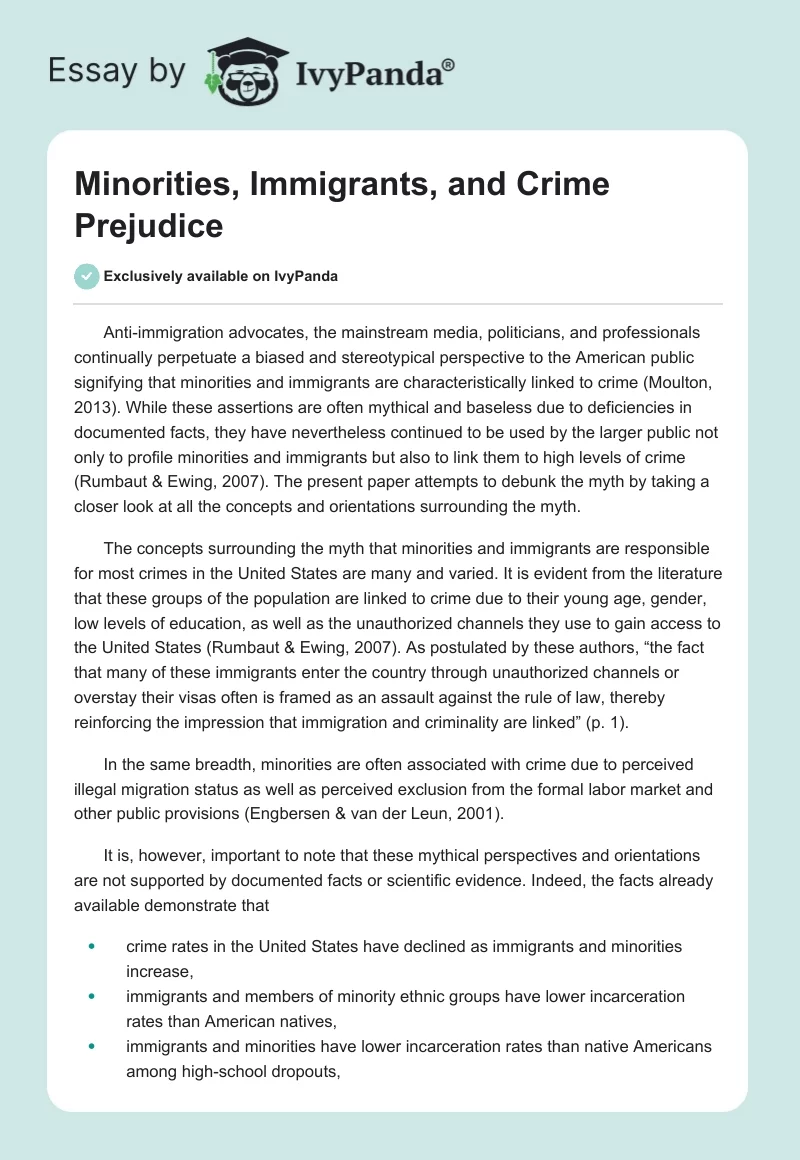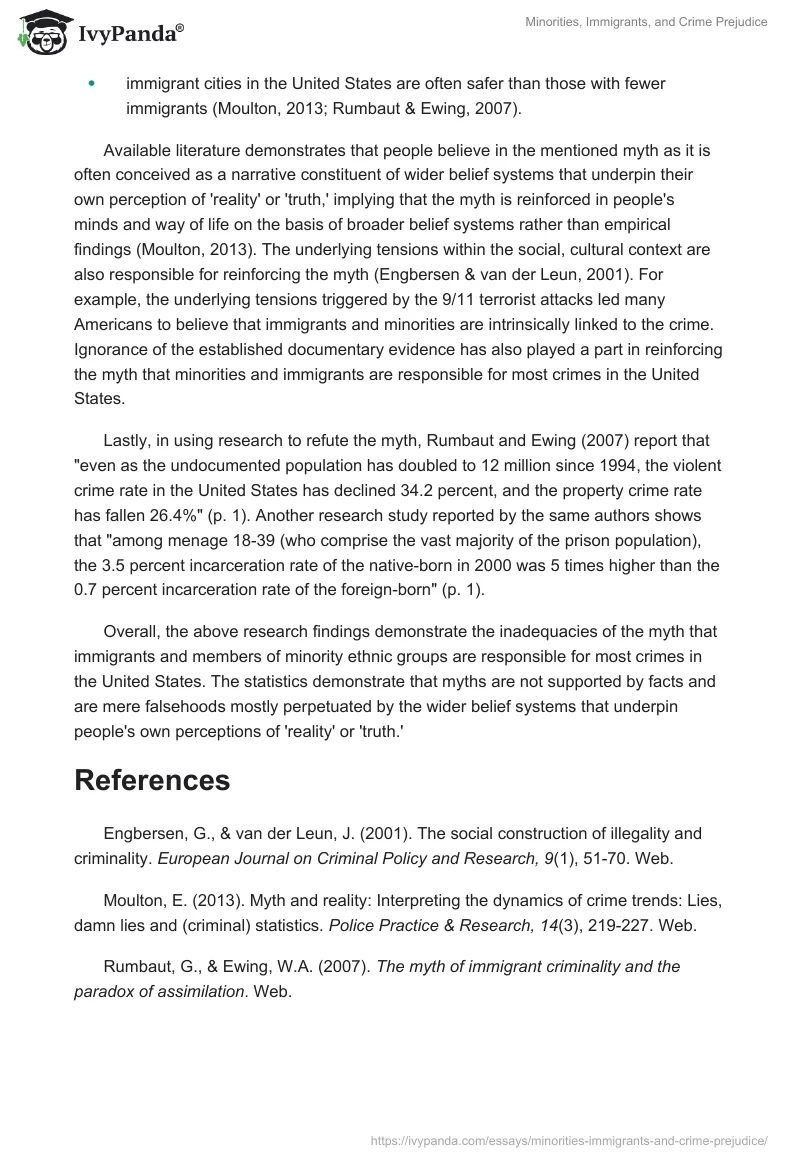Anti-immigration advocates, the mainstream media, politicians, and professionals continually perpetuate a biased and stereotypical perspective to the American public signifying that minorities and immigrants are characteristically linked to crime (Moulton, 2013). While these assertions are often mythical and baseless due to deficiencies in documented facts, they have nevertheless continued to be used by the larger public not only to profile minorities and immigrants but also to link them to high levels of crime (Rumbaut & Ewing, 2007). The present paper attempts to debunk the myth by taking a closer look at all the concepts and orientations surrounding the myth.
The concepts surrounding the myth that minorities and immigrants are responsible for most crimes in the United States are many and varied. It is evident from the literature that these groups of the population are linked to crime due to their young age, gender, low levels of education, as well as the unauthorized channels they use to gain access to the United States (Rumbaut & Ewing, 2007). As postulated by these authors, “the fact that many of these immigrants enter the country through unauthorized channels or overstay their visas often is framed as an assault against the rule of law, thereby reinforcing the impression that immigration and criminality are linked” (p. 1).
In the same breadth, minorities are often associated with crime due to perceived illegal migration status as well as perceived exclusion from the formal labor market and other public provisions (Engbersen & van der Leun, 2001).
It is, however, important to note that these mythical perspectives and orientations are not supported by documented facts or scientific evidence. Indeed, the facts already available demonstrate that
- crime rates in the United States have declined as immigrants and minorities increase,
- immigrants and members of minority ethnic groups have lower incarceration rates than American natives,
- immigrants and minorities have lower incarceration rates than native Americans among high-school dropouts,
- immigrant cities in the United States are often safer than those with fewer immigrants (Moulton, 2013; Rumbaut & Ewing, 2007).
Available literature demonstrates that people believe in the mentioned myth as it is often conceived as a narrative constituent of wider belief systems that underpin their own perception of ‘reality’ or ‘truth,’ implying that the myth is reinforced in people’s minds and way of life on the basis of broader belief systems rather than empirical findings (Moulton, 2013). The underlying tensions within the social, cultural context are also responsible for reinforcing the myth (Engbersen & van der Leun, 2001). For example, the underlying tensions triggered by the 9/11 terrorist attacks led many Americans to believe that immigrants and minorities are intrinsically linked to the crime. Ignorance of the established documentary evidence has also played a part in reinforcing the myth that minorities and immigrants are responsible for most crimes in the United States.
Lastly, in using research to refute the myth, Rumbaut and Ewing (2007) report that “even as the undocumented population has doubled to 12 million since 1994, the violent crime rate in the United States has declined 34.2 percent, and the property crime rate has fallen 26.4%” (p. 1). Another research study reported by the same authors shows that “among menage 18-39 (who comprise the vast majority of the prison population), the 3.5 percent incarceration rate of the native-born in 2000 was 5 times higher than the 0.7 percent incarceration rate of the foreign-born” (p. 1).
Overall, the above research findings demonstrate the inadequacies of the myth that immigrants and members of minority ethnic groups are responsible for most crimes in the United States. The statistics demonstrate that myths are not supported by facts and are mere falsehoods mostly perpetuated by the wider belief systems that underpin people’s own perceptions of ‘reality’ or ‘truth.’
References
Engbersen, G., & van der Leun, J. (2001). The social construction of illegality and criminality. European Journal on Criminal Policy and Research, 9(1), 51-70. Web.
Moulton, E. (2013). Myth and reality: Interpreting the dynamics of crime trends: Lies, damn lies and (criminal) statistics. Police Practice & Research, 14(3), 219-227. Web.
Rumbaut, G., & Ewing, W.A. (2007). The myth of immigrant criminality and the paradox of assimilation. Web.


